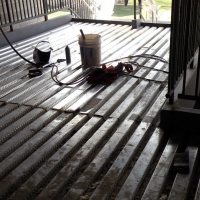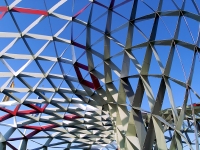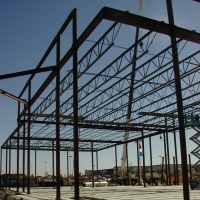Metal Decking
Wed, Jul 21, 2010Metal decking is used in a wide variety of commercial and industrial applications. It includes steel roof and floor decking, aluminum floor decking, and acoustical metal decking. Metal decking typically has a ribbed or corrugated profile that is achieved through a process called roll forming. Large sheets of metal are pulled off of rolls and led through rolling dies that create the ribbed profile. Metal decking is used for flooring and roofing and also for the creation of forms for concrete. Metal decking is installed by using screws or pneumatically driven pins and can also be welded.




